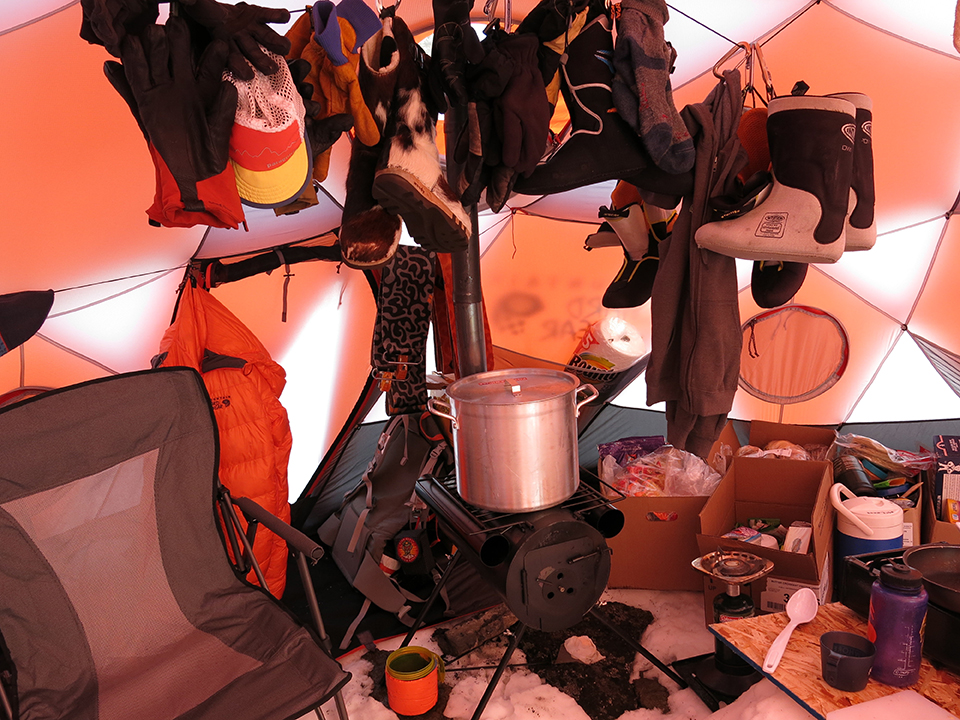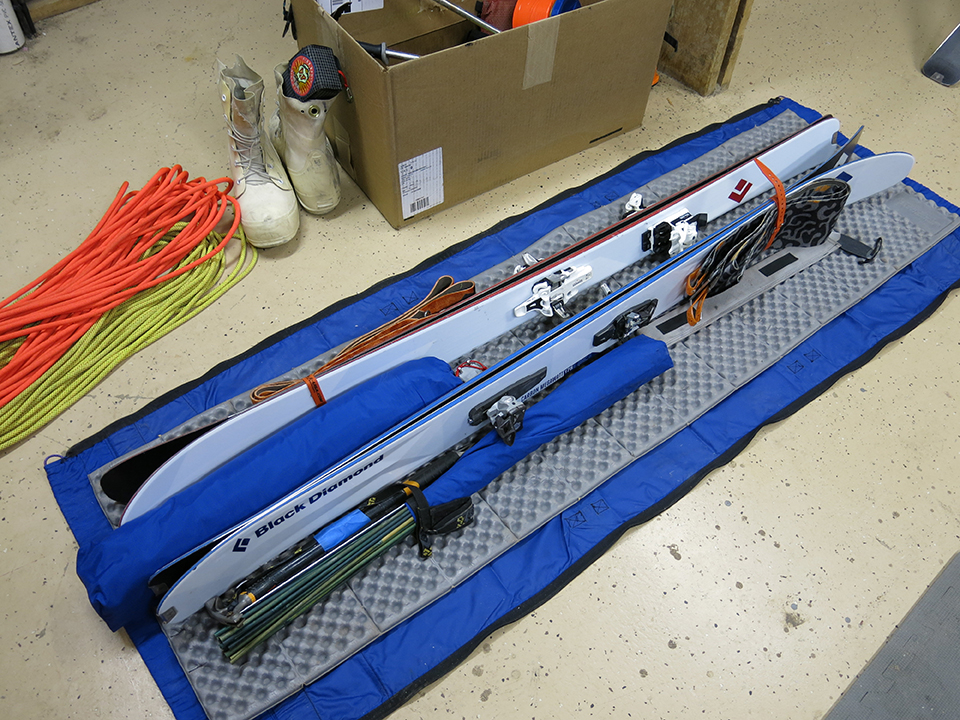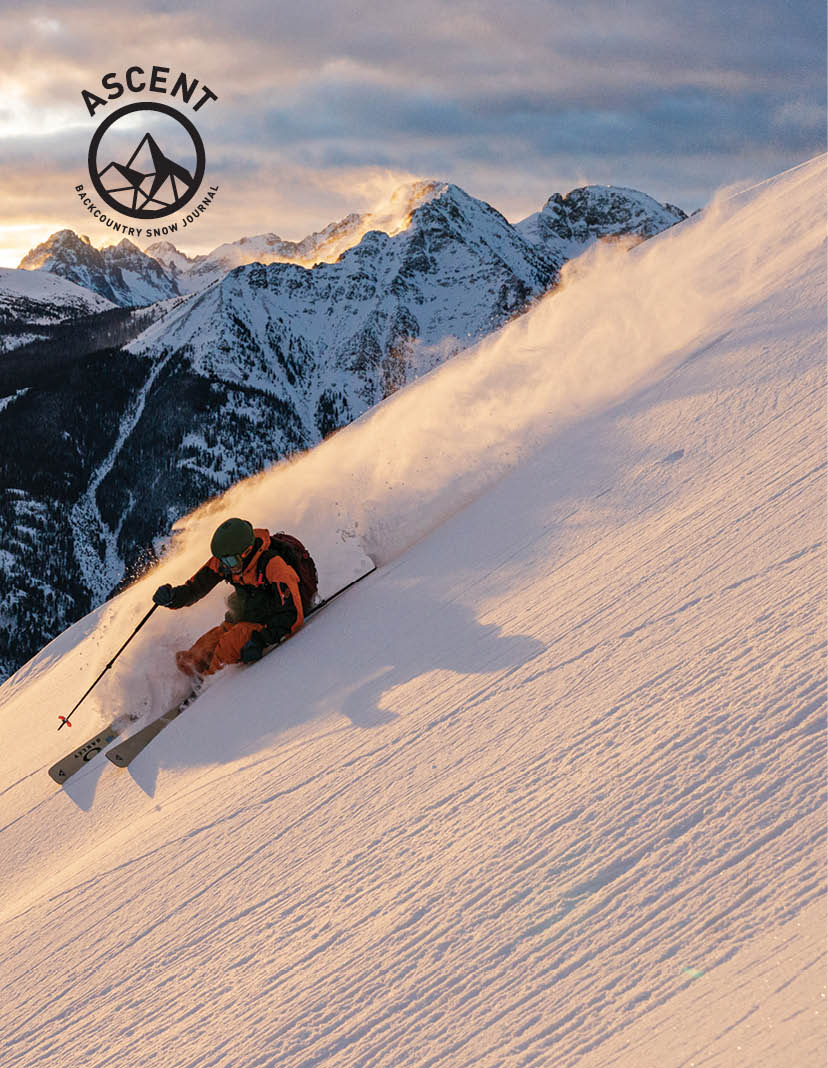Have you ever wondered how some lucky bastards/beotches always seem to go on cool ski trips year after year, frolicking through deep snow, throwing piles of sponsorship cash in the air and always having sunny days? Although the photos and video make it look fun, effortless and all about the down, putting together successful trips is more of an art form than luck and requires quite a bit of hard work. Some people are natural trip organizers, but for the majority, the harder you work at it, the luckier you get.
Alaska Was Not Skied in a Day
Rome was not built in a day, nor was Alaska, Europe or Antarctica ticked off in a day. You have to start small and work your way up. Trips get easier the more you do them, but there is a long learning curve which can oftentimes be invisible. I recently relearned this while taking my kids to ski resorts, where as an adult, you show up, get in line and go skiing. With young kids however, just getting to the day lodge is a major logistical victory and you are lucky to squeeze in even a run or two in the beginning. The same goes for trips. The skiing is just the icing on the cake, but there is a ton of background work involved before the first turn can be made.
For this article, a “trip” denotes self-sufficient outings with winter camping, as opposed to a “vacation” which involves hotels, restaurants and mechanized transportation. Although the slope angles may be similar, on a trip, the skiing is going to feel much harder due to lightweight gear, skiing with a full pack and choking down instant oatmeal following a sleepless night in a cold snow cave at altitude. Turn for turn the skills are the same, but winter camping is often what makes all of the difference. This is far from sexy, but it’s important as you need to be well rested and fed before you can crank out 8,000’ of backcountry skiing day after day.
One of the key elements to tripping is bringing the right gear, which is almost always different. If you bring too much, your mobility is severely compromised. If you don’t bring enough, you are cold, tired and hungry. Each trip needs to be reevaluated on its own and a hut trip will be different than a camping trip and extended camping will be different than a single night. In this regard, any and all trips are valuable learning experiences – hut trips, camping trips, lightweight, heavy, hotels or snow caves. One of the best pieces of advice I’ve ever received came from a fortune cookie which just said “Practice saying yes.” Go on as many little trips as you can and build up a foundation.
The subject of winter camping is a book (or many books) on its own, but in general, bring enough warm sleeping pads and a warm sleeping bag so that you can actually get a good night’s sleep. I once passed a long column of climbers on Mt. Rainier who were braying about how hard it was to climb after getting no sleep, to which the guide replied “You’re not the first person to climb Rainier with no sleep. Keep moving.” It’s possible and even sometimes fun to go extremely lightweight and fast on peaks, but for the long haul, it’s important to stay comfortable and safe in the mountains. Anchor your tent, boil up plenty of water, eat “normal” food as much as possible, stay alert, keep moving and remember that it doesn’t have to be fun to be fun.
Partner Perfect
When considering partners for a skiing trip, turning skills are quite a ways down on my list of priorities, and things like teamwork, good humor, general mountain skills and the ability to both chill & charge and are far more important. Conversely, you can be the best skier in the world, but if you can’t make it to the top because you are exhausted, cold, sick and hungry, it hardly matters.
Another advantage of doing lots of small trips is that it helps to develop a strong network of likeminded tripping friends and potential partners. Before going on a three week trip to the Arctic Circle, I spent many nights with Brad Barlage driving around the American west eating crappy fast food, digging his 2wd van out of snowbanks and skiing everything from bottomless powder to solid ice. With partners like Mark Holbrook, we figured out that bringing gallons of water on a winter trip was pointless as it freezes. All of these misadventures are obvious and humorous in retrospect, but we learned a lot along the way and also met an international cast of characters, many of whom are still reliable ski tripping partners to this day. It’s unlikely that you will get a call out of the blue for an all-expense paid trip to the Himalayas unless you have laid down a lot of background work.
Hit the Snow Skinning
One of the biggest hidden expenses of modern day trips is time. When the famous Banff Springs Hotel in Alberta, Canada first opened over 125 years ago, the average stay was measured in months. Today it is a matter of hours. The first trips to Antarctica took the resources of a nation and multiple years. Today it can be booked on-line and done door-to-door in ten days. But, just because trips can be done on compressed timelines, doesn’t mean that it is always a good idea, especially when dealing with snowy winter weather and conditions.
For a winter camping trip to a remote location, my personal minimum is to allocate ten days of skiing, knowing that 3-5 of those days will most likely be weather days. A surgically planned week long trip usually means two days of travel and five days of skiing, but in places like Alaska where storms can rage for days, you might travel all that way there only to get completely shut down.
Because each day counts, place a premium on packing beforehand and get to the airport early to reduce the chance of having your bags lost. Stupid little items like a stove repair kit or coffee cone can take five minutes to procure at home and yet burn up hours of searching in an unfamiliar city.
Strategic packing is another important concept as trips often involve multiple modes of travel over a period of days and tearing your entire kit apart time after time gets old. I pack in layers starting with fragile items which I don’t need right away first (skis, stoves, etc.) and then build up around that. A sleeping bag goes near the top, both for added protection and in case you need to do an impromptu overnight somewhere.
An essential tool for trip packing is a hanging scale, which will easily pay for itself if you can avoid just one overweight bag. Pack your gear right up to the weight limit (50lbs for U.S. domestic flights) and leave a few small dense items near the top. Often, airlines will let a pound or two slide, but if not, pull the small, heavy items out (1st Aid kit, repair kit, spare batteries) and carry them on in your personal luggage.
The Business of Tripping
No doubt about it – trips can be pricey endeavors, especially when you factor in all of the required gear. But if it is any consolation or inspiration, trips do get easier and less costly the more you do them. Jim Donini, one of the universal masters of climbing trips, claims that going on trips actually saves him money as he’s not going out to eat, paying for movies, etc. I’m not sure if I believe this, but it is the thought that counts – you have to make trips a priority first and worry about how to pay for them second. Or as Jack Tackle, one of Jim Donini’s frequent partners in climbing crime says “Just buy the fucking ticket.” Once you are substantially committed, things have a way of working.
I think of each major trip as a type of small, temporary business with its own organization, finances, folders, logistics and personnel. Organizing a small trip might involve ten hours spread out over a few weeks, whereas a major trip could involve hundreds of hours over six months. Unlike old school British or Asian expeditions where the Expedition Leader is treated like royalty, I prefer to think of the expedition leader as the person who does the grunt work of pulling together a million various factions and makes the trip happen for the team. If you win a grant or secure a gear sponsorship, it should be shared equally among all team members. American style trips are far more democratic than other parts of the world.
Finances
With all of the various supplies, expenses, currencies and people involved, trip finances can often be a messy affair and left to the end, can create hard feelings on an otherwise great outing. Trips are expensive to begin with, and can be even more so if you unwittingly get stuck with a big chunk of the bill.
To avoid this, state up front that all expenses are to be divided equally at the end of the trip, and that individuals are responsible for keeping exact track of any items which he/she want to be reimbursed for as group expenses. If you buy a pack of gum, share it and want to be reimbursed, write it down and/or keep the receipt. Conversely, if you feel like treating the team to a night in a hotel instead of camping in the mud, don’t record the expense.
At the end of the trip, each individual adds up his/her own contribution and then all of those are added up for a grand total, which is divided by the number of people. From there the math is easy – if Bert put in $450, Ernie put in $350 and the divided average is $400, then Ernie pays Bert $50 and it is all done without any need to discuss who paid for lunch and who paid for a tank of gas. This is a simplified example, but it works with any number of people.
Make a Decent Proposal
“Any worthwhile trip can be planned on the back of an envelope”
H.W. Tilman
Had Tilman been alive today, he might have modified this to say “Any worthwhile trip can be detailed in a double sided, single page, 980 KB PDF file which can be easily emailed and understood in less than 30 seconds.” Good proposals are important for a number of reasons; first they establish the tone and intent of the trip up front, second, they help attract partners, and third, they set a tentative budget.
The basic elements of a proposal are right out of a high school writing composition class – who, what, when, where and why. Each topic should get a sentence or two, max. The front page should have a nice photo of the area, and then all of the verbiage. The second page, or backside, should have some photos and a few details. Don’t overload people and remember, having a plan is important, but following it is not.
Another key element of a proposal is cost estimating. Take your best guess at what the big expenses are going to be and look up things like plane fares, permits and glacier flights. Figure $15 per person, per day for food & cooking fuel. Throw in about 10% of the total as “misc.” The true costs may be higher or lower, but with enough practice you can dial it in fairly close. I keep track of all of my trip expenses and review them afterwards, as much as anything to help with future trip budgeting. While an expedition to Greenland sounds great in theory, a quick and realistic cost estimate is an excellent reality check and will weed out the true believers from the mildly interested.
Workin’ It
In the early 1990’s, the idea of being a “pro” backcountry skier was usually the punchline to a joke – if you found a dropped PowerBar on the skin track, you could now claim you were sponsored by PowerBar. Other prime sponsors included Heinz (free catsup & mustard packets at the deli) and Scott (toilet paper at the trailhead outhouse). But then again, nobody was really trying to be sponsored, as there was so little market for backcountry skiing, at least in the U.S.
Times have changed. Starting with the symbolic open gate policy at ski resorts bordering public land, suddenly the backcountry became sexy and at the same time the definition of “backcountry” grew to include almost everything except lift-served groomers. As gear choices and styles multiplied, more and more photos and video started pouring in from the BC and have now almost become the norm for skiing imagery.
I’ve had the good fortune to be on both the giving and the receiving end of funding trips, and there are a few basic things to consider.
- Bring a photographer along. From a company’s marketing perspective, if you go on a trip and there are no photos, videos or stories, the trip didn’t happen. Good mountaineering photographers are worth their weight in skin glue, whereas a bad one can ruin your trip by being completely out of shape, out of his/her element or overshooting every inch of the way.
- Don’t sweat the micro sponsorships. Unless you are going through gallons of sunscreen and truck loads of chapstick, it is hardly worth the effort to ask for freebies. Same with sunglasses, hats and a box of energy bars.
- Follow through. If you have successfully finagled some aspect of trip sponsorship based on promised gear reviews, photos, social media postings or videos, MAKE SURE AND FOLLOW THROUGH once you return. This can be tricky if the trip didn’t meet its objectives or was shut down by weather, but it is one of the criteria which separate the pros from the amateurs and helps with future gear groveling. Get creative.
- Be realistic. I once reviewed a sponsorship request to ski Mount Rainier which included a full set of camming devices. Another one allocated $500 for wands and yet another offered Gold Level status for paying for a rental car.
- Know your companies. One of the funniest proposals I’ve ever read extolled the virtues of a competitors gear before asking for vast quantities of it. “Hmm, if you like our competitors gear so much, perhaps you should ask them for it?”
- Don’t ask for cash. It seldom works that way. Outdoor companies are besieged with expedition requests and in general either contribute to a grant (PolarTec, Mugs Stump, American Alpine Club, Shipton/Tilman) or allocate travel funds to their athletes on an annual basis.
- Manufacturers vs. Distributors. This is an important distinction when groveling for gear. Gear manufacturers will often have cosmetic seconds, sales samples, prototypes or a marketing budget to draw gear from. Gear distributors on the other hand are almost more like a shop – they buy, or borrow gear from the manufacturers and either have to return it or pay for it. Basically, distributors are much tighter with the gear slush fund.
- Cost, Wholesale & Retail. These are the three levels of pricing associated with most outdoor gear. “Cost” is the amount it takes to actually produce an item without any profit added on and is a reasonable request for gear mooching as the loss of potential profit could be offset by the increased exposure from gear testimonials, photos, social media blahblah, etc. (see “Follow Through” above). If cost isn’t an option, be grateful for a limited one-time purchase at wholesale.
Of course, groveling for gear and material items are hardly the main reason to go on trips and the real rewards have to do with visiting amazing places with great people. Any day of skiing is a gift, but to be able to it in a faraway place under your own power makes it even more magical and memorable. Trip organizing is not everyone’s cup of chai and lots of people insist that the best trips are those which are organized by someone else. But to me that is missing the point. Planning a carefully organized trip and seeing it unfold before your tips can almost be as satisfying as the turns themselves, and if it is done right, it seems effortless.
Andrew McLean is a 5th generation Utard and the author of “The Chuting Gallery – A Guide to Steep Skiing in the Central Wasatch Mountains.” He lives in the outskirts of Park City with his wife, Polly and two human firecrackers for daughters.


















Thanks for taking the time to write such a detailed and informative article with little dashes of humor. I look forward to reading about your most recent expeditions.